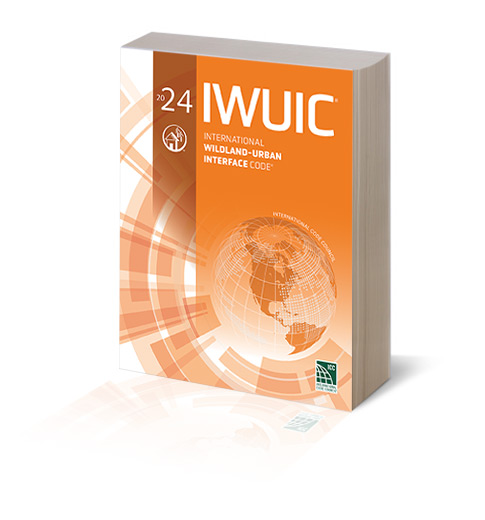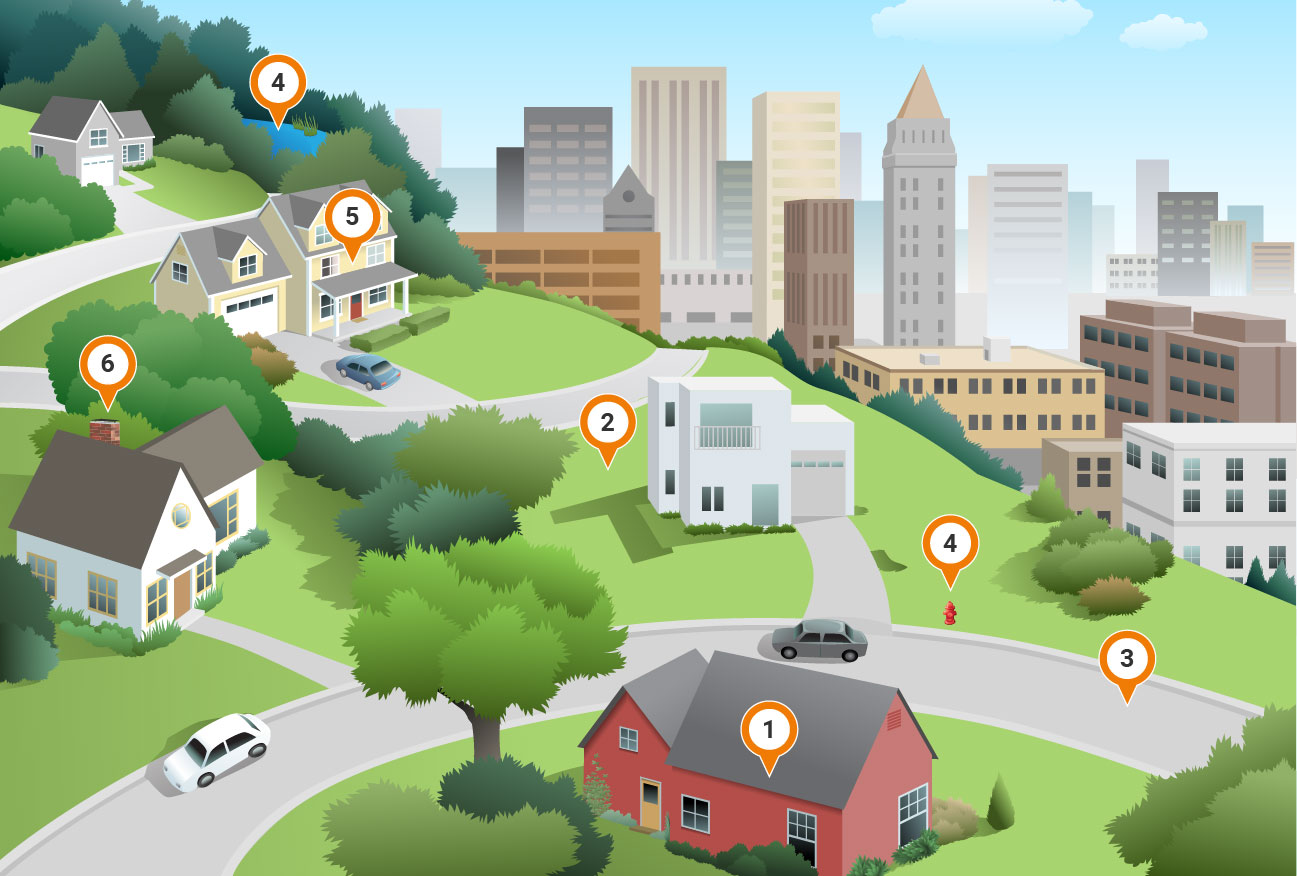
What is the
International Wildland-Urban Interface Code?
The International Wildland-Urban Interface Code (IWUIC) establishes requirements for land use and the built environment within designated Wildland Urban Interface (WUI) areas using prescriptive and performance provisions. The IWUIC establishes minimum special regulations for the safeguarding of life and property from the intrusion of wildfire and:
- Regulates ignition-resistant construction techniques and defensible space as well as fire department access and available water supplies for fire suppression.
- Focuses on preventing ignition of buildings and vegetative fuels from direct exposure to wildfire and fire exposure from adjacent structures.
- Helps prevent structure fires in the WUI from spreading to wildland fuels, even in the absence of fire department intervention.
ICC 605
ICC 605, Standard for Residential Construction in Regions with Wildfire Hazard is currently under development (not yet approved). This standard will specify enhanced prescriptive methodologies of wildfire-resistant design and construction details for new and existing buildings and other structures in wildfire hazard areas. The standard will provide prescriptive details for walls, floors, roofs, foundations, windows, doors and other applicable components of construction and a methodology for the identification, assessment and retrofit of existing residential dwellings to protect homes in wildfire hazard areas.
Understanding the International Wildland-Urban Interface Code
The IWUIC establishes requirements for land use and the built environment within designated wildland-urban interface areas using prescriptive and performance provisions. The code is intended to work as a system of its requirements, providing a comprehensive and holistic approach to enhancing building resilience from wildfires.
The key components of the IWUIC include:
- Ignition-Resistant Construction
- Defensible Space
- Emergency Vehicle Access
- Water Supply
- Fire Sprinklers
- Chimney's with Spark Arrestors
The IWUIC is a model code intended to supplement the adopted building and fire codes of a jurisdiction. The unmitigated use of property in WUI areas is a potential threat to life and property – from fire and resulting erosion from burning vegetation. The IWUIC establishes minimum requirements for the safeguarding of life and property from the intrusion of fire from wildland fire exposures and fire exposures from adjacent structures and prevents structure fires from spreading to wildland fuels, even in the absence of fire department intervention. Safeguards to prevent the occurrence of fires and to provide adequate fire protection facilities are provided through a tiered approach commensurate with the relative level of hazard present.
In addition to protecting individual livelihoods, the IWUIC also supports community resilience. An adverse event, like a wildfire, reveals the importance of both a coordinated approach to resilience across multiple community functions and the impacts that can occur across local economies. The IWUIC recognizes the benefits of a holistic approach to addressing risks and enhancing community resilience. Protection from wildfires relies on a community-wide approach that engages multiple actors. Reliance on building-level measures alone will not provide the level of protection necessary.
Among management options offered to help mitigate the U.S. wildfire problem, the National Cohesive Strategy suggests that focusing on building codes, specifically the adoption and enforcement of the IWUIC, supports the goal of making homes and other buildings more resistant to ignition. Unlike other model codes produced by the International Code Council, the IWUIC focuses on protecting life and property from a very specific threat.
Fire Resistant Construction Codes Working Together
The IWUIC works in conjunction with other codes including the International Building Code (IBC), International Residential Code (IRC), International Fire Code (IFC) and International Property Maintenance Code (IPMC) to provide requirements in areas vulnerable to wildfire. These requirements directly influence the resilience of buildings and communities in the WUI.
Key requirements for building or retrofitting a house to comply with the IWUIC include:
- Adding fire-resistant windows, doors and cladding.
- Adding a non-combustible roof and keeping it clear of pine needles and other flammables.
- Removing woodpiles and other fuels from near your home.
- Cutting back vegetation surrounding the house.



